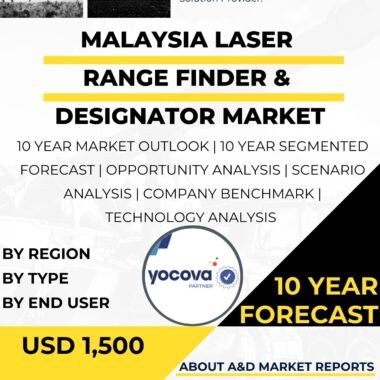Description
The large caliber ammunition market in South Korea is marked by a growing emphasis on defense modernization, driven largely by geopolitical tensions in Northeast Asia. The increasing military threats, particularly from North Korea’s missile tests and military activities, have prompted South Korea to prioritize strengthening its defense capabilities through continuous innovation and development of domestic ammunition production. This has led to steady growth in defense spending, which stood at around 2.6% of the country’s GDP in 2023, reflecting the strategic importance assigned to national security. The result is a robust market focused on advanced munitions such as precision-guided shells and armor-piercing rounds, with ongoing efforts to achieve technological self-sufficiency and reduce reliance on imports.
South Korea’s large caliber ammunition market generated revenue exceeding USD 100 million in the early 2020s, with projections estimating growth to approximately USD 150 million by 2030, expanding at a compound annual growth rate (CAGR) of around 4% to 5%. The defense sector remains the dominant application for these munitions, with its share in revenue constituting virtually 100% of the market, reflecting the country’s prioritization of military needs over civilian or commercial usage. The demand is supported by a combination of factors, including defense procurement programs, indigenous weapons development, and regional security challenges, which collectively create a favorable environment for market growth.
Key players in the South Korean ammunition market include both large domestic industrial conglomerates and specialized small- and medium-sized enterprises that focus on cutting-edge technology development. These companies benefit from South Korea’s globally competitive industrial infrastructure, skilled workforce, and strong governmental support for research and development. Innovative efforts are particularly concentrated on Industry 4.0 technologies, incorporating artificial intelligence and eco-friendly manufacturing practices to enhance the efficiency and sustainability of ammunition production. These initiatives are complemented by strategic international partnerships and export-oriented strategies, aiming to expand South Korea’s role as a significant player in the global defense industry.
The market also benefits from increased indigenous production capabilities. South Korea has made strides in developing precision-guided munitions and scalable production lines that support the increasing demand for modern artillery shells and missile systems. Notably, advancements like the successful testing of the air-launched cruise missile integrated with domestic fighter aircraft underline the country’s focus on high-tech, long-range strike capabilities. This development not only boosts the nation’s defense autonomy but also enhances its potential as an arms exporter, diversifying market opportunities beyond domestic consumption.
South Korea?s defense strategy involves balancing modernization with sustainability, incorporating advanced materials and manufacturing techniques that meet stringent international arms regulations and environmental standards. The regional geopolitical environment, marked by tensions with neighboring countries, has spurred a shift toward more flexible and agile production and supply chain management to rapidly respond to evolving threats. These factors collectively create a resilient and adaptable market dynamic.
On the regional scale, South Korea is considered one of the fastest-growing markets for large caliber ammunition in the Asia Pacific area, following the leads of larger economies like China. Despite being smaller in overall market size compared to global leaders such as the United States, South Korea’s market is significant due to the strategic emphasis on military readiness and technological innovation in the munitions sector. The government?s increasing investments in defense R&D and the push for export expansion contribute to the country?s growing influence in the global military ammunition supply chain.
Government collaborations with international allies enhance the market?s scope, such as supplying artillery shells to support allied countries in conflict zones, illustrating South Korea’s commitment to international defense cooperation. This offensive and defensive balance in the market ensures continued pressure for technological upgrading and capacity expansion.
In summary, the large caliber ammunition market in South Korea is characterized by steady, sustainable growth fueled by geopolitical imperatives, government backing, and a strategic focus on technological innovation and self-reliance. The evolving threat landscape in Northeast Asia acts as a powerful driver for continuous market expansion. The focus on precision, quality, and export competitiveness positions South Korea as a key regional contender in the global large caliber ammunition industry, with prospects for further advancement as it continues to invest in sophisticated weapons systems and production capabilities. This dynamic is further supported by a strong industrial base that integrates cutting-edge technology and adheres to international standards, ensuring South Korea?s ammunition market remains robust and forward-looking through the next decade.
References for data points include recent market analyses, government defense expenditure reports, and industry forecasts projecting market growth and technological trends up to and beyond 2030




